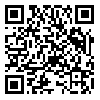Volume 13, Issue 6 (3-2015)
TB 2015, 13(6): 127-137 |
Back to browse issues page
Shahid Sadoughi University of Medical Science , mzeidabadynezhad@yahoo.com
Abstract: (5426 Views)
Introduction: Breast cancer is the most common cancer among women and the risk is higher among women who have close relatives with breast cancer. So the aim of this study was to investigate the prevalence and barriers to mammography in close relatives of breast cancer patients in sirjan.
Methods: The study population consisted of 65 women, all close relatives (First-degree relatives including sister, mother and daughter and Second-degree relatives, including aunts and uncles) of breast cancer patients in the city of Sirjan by the year 1387 to the year 1391. Data were collected by the perceived barriers section of champion's Health Belief Model Scales (CHBMS) and were analyzed by spss19 Software, using chi-square, independent T and Kendall’ W tests.
Results: of participants, 86.1% were first-degree relatives (sister, mother and daughter) and 13.8% of them were second-degree relatives (aunts and uncles) of women with breast cancer and most of them were under 50 years of age. Despite the fact that, 88.9 % were housewife, 84.6% had an insurance coverage and 75.4 % had less than 10 km away mammography center, only 15.4 % of them had a mammogram. There was no significant difference in the mean score of perceived barriers to mammography among women who did (25.93) and those who did not (26.33) a mammogram. The only significant difference in mean score of perceived barriers was seen in the proportion of participant with breast cancer patients (p= 0/01). While the cost of mammography with a mean order of 7.85, fear of finding breast cancer with a mean order of 6.72 and mammography painfulness with a mean order of 5.97 were the greatest perceived barriers to mammography.
Conclusion: As high cost of mammography is one of the most important perceived barriers requires that health services system, reduce mammography cost through provision of services in public centers and using more insurance coverage. Also, health professionals, should explain that the cost of a mammogram is minimal compared to the cost of treatment and encourage mammography in women at high risk. In addition, the fear of finding breast cancer and pain during mammography requires health professionals' efforts to develop health promotion programs for breast cancer and benefits of mammography and outlines its steps that can minimize the fear and then increase regular use of screening programs.
Type of Study: Research |
Subject:
Special
Received: 2013/03/8 | Accepted: 2013/07/12 | Published: 2015/03/15
Received: 2013/03/8 | Accepted: 2013/07/12 | Published: 2015/03/15
| Rights and permissions | |
 |
This work is licensed under a Creative Commons Attribution-NonCommercial 4.0 International License. |


